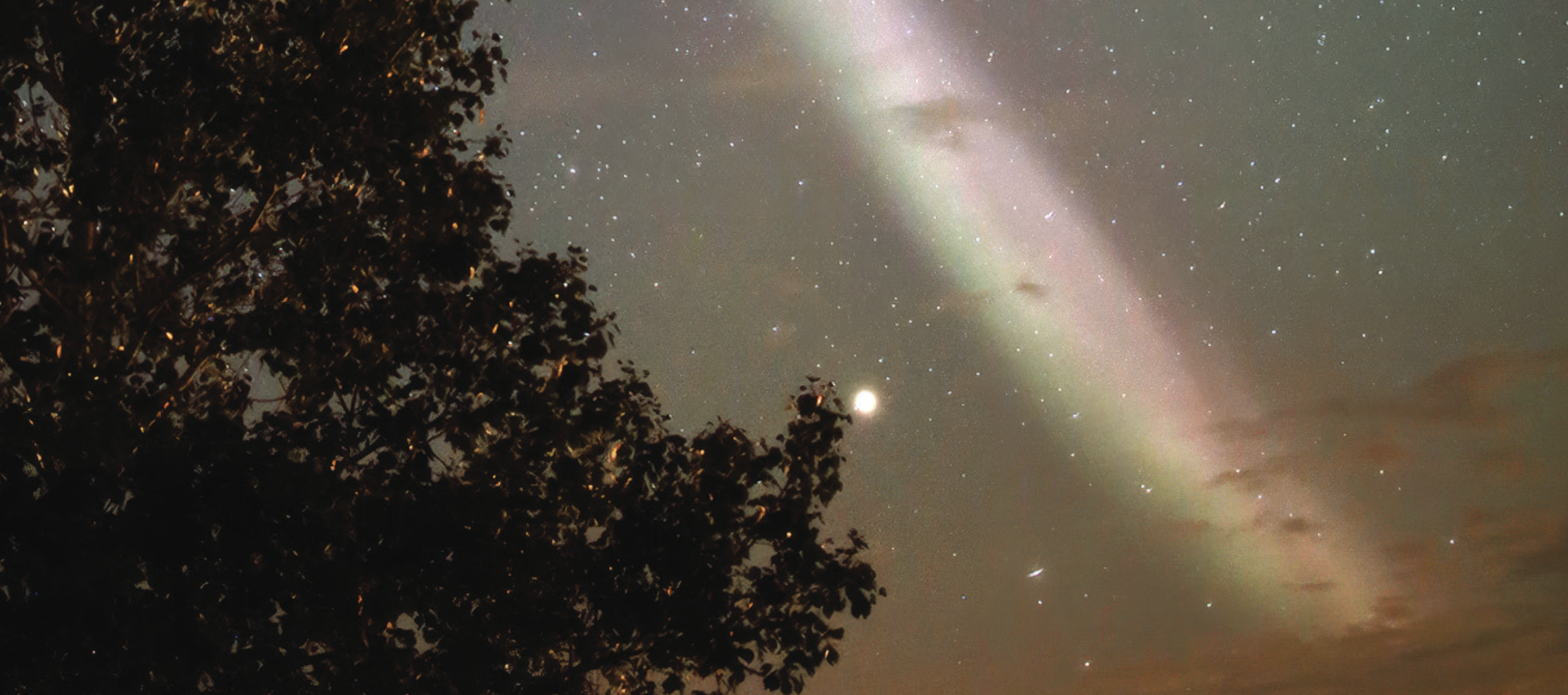Quiet Skies, Brighter Mornings
By Alan Hale
Our evening skies this month are rather void of bright planets—a distinct contrast to earlier this year.
At the beginning of July, Mercury can be seen very low in the west during dusk, but it disappears into twilight within the next couple of weeks. Meanwhile, Mars, having faded quite a bit since it was closer to Earth earlier this year, is visible low in the west after dusk. By the end of July, it sets near the end of twilight.
Saturn rises in the east approximately an hour before midnight and is highest above the southern horizon around the beginning of dawn. Saturn is normally viewed as the ringed planet. Earlier this year, the rings were presented edge-on from Earth’s perspective. Right now, they appear as little more than a thin line.
Venus gleams brilliantly in our eastern skies during morning hours this month, as it rises up to an hour before the beginning of dawn. During the latter part of July, Jupiter also begins to make its appearance, rising during the early stages of twilight. One rather interesting morning-sky event takes place July 20, when the crescent moon passes through the Pleiades star cluster in Taurus.
The Perseids, one of the best-known of the “annual” meteor showers, takes place in August, but this year will be washed out by bright moonlight.
However, late in July, some lesser meteor showers—including one called the Delta Aquarids—may produce up to one to two dozen meteors per hour in our southern sky, partially making up for what we will miss next month.
Since we are still near the peak of the 11-year-long sunspot cycle, it is possible we may continue to see occasional displays of the aurora. There have been a couple of displays visible from northern New Mexico during recent weeks.
Other aurora-related phenomena may appear, including one that was initially and informally called “Steve”—a name borrowed from the 2006 animated movie Over the Hedge. Steve typically shows up as a long beam of colored light. Studies from satellite missions a few years ago revealed Steve is caused by charged particles in the atmosphere heated up to high temperatures by the solar wind. Following further research, today Steve is now known as STEVE, an acronym for Strong Thermal Emission Velocity Enhancement.


